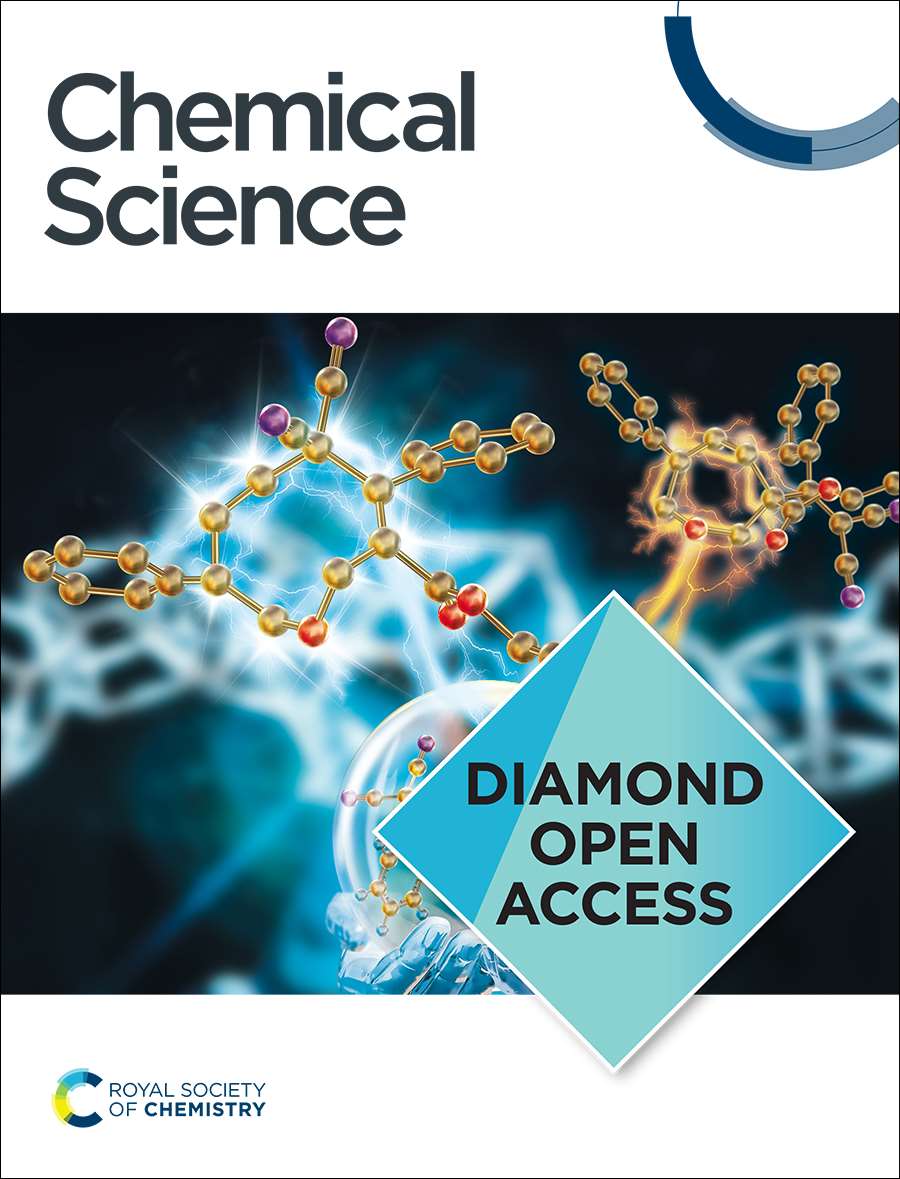Significance of Halogen Bonding in the Synergistic Nucleation of Iodine Oxoacids and Iodine Oxides
IF 7.6
1区 化学
Q1 CHEMISTRY, MULTIDISCIPLINARY
引用次数: 0
Abstract
Congeneric iodine oxoacids and iodine oxides, key nucleating vapours in the marine atmosphere, have been reported to nucleate individually. However, whether they can nucleate together remains unknown. Here, we provide molecular-level evidence that I2O4, the iodine oxide with the highest nucleation potential towards iodine oxoacids, can synergistically nucleate with HIO3-HIO2. The nucleation rate of HIO3-HIO2-I2O4 is 1.5 to 6.8 times higher than that of the known most efficient iodine-associated two-component (HIO3-HIO2) nucleation at 278.15 K, enhancing the role of iodine-containing species in marine atmospheric particle formation. Microscopic analysis of the three-component cluster configurations revealed that an unexpected acid‒base reaction between I2O4 and HIO2/HIO3 is a key driver of this efficient synergistic nucleation, besides hydrogen bonds and halogen bonds. We identified halogen bond-induced basicity enhancement as the chemical nature of I2O4 behaving as a base in the nucleation process with HIO2/HIO3. Such a basicity enhancement effect can be extended to other iodine-containing species, e.g., HIO2 and the more acidic HIO3, suggesting a common feature in interactions between iodine-containing species. Our findings clarify the synergistic nucleation of iodine oxoacids and iodine oxides and highlight the necessity of considering the effect of halogen bond-induced basicity enhancement on the formation of iodine-containing particles.卤素键在碘氧酸和碘氧化物协同成核中的意义
同属的碘氧化酸和碘氧化物是海洋大气中主要的成核蒸汽,据报道它们分别成核。然而,它们是否能一起成核仍然未知。在这里,我们提供了分子水平的证据,证明I2O4,对碘氧酸具有最高成核电位的碘氧化物,可以与HIO3-HIO2协同成核。在278.15 K时,HIO3-HIO2- i2o4的成核速率比已知最有效的碘相关双组分(HIO3-HIO2)的成核速率高1.5 ~ 6.8倍,增强了含碘物质在海洋大气颗粒形成中的作用。微观分析表明,除了氢键和卤素键外,I2O4和HIO2/HIO3之间意外的酸碱反应是这种高效协同成核的关键驱动因素。我们发现卤素键诱导的碱度增强是I2O4在与HIO2/HIO3成核过程中作为碱的化学性质。这种碱度增强效应可以扩展到其他含碘物种,例如HIO2和酸性更强的HIO3,这表明含碘物种之间相互作用的共同特征。我们的研究结果阐明了碘氧酸和碘氧化物的协同成核作用,并强调了考虑卤素键诱导的碱度增强对含碘颗粒形成影响的必要性。
本文章由计算机程序翻译,如有差异,请以英文原文为准。
求助全文
约1分钟内获得全文
求助全文
来源期刊

Chemical Science
CHEMISTRY, MULTIDISCIPLINARY-
CiteScore
14.40
自引率
4.80%
发文量
1352
审稿时长
2.1 months
期刊介绍:
Chemical Science is a journal that encompasses various disciplines within the chemical sciences. Its scope includes publishing ground-breaking research with significant implications for its respective field, as well as appealing to a wider audience in related areas. To be considered for publication, articles must showcase innovative and original advances in their field of study and be presented in a manner that is understandable to scientists from diverse backgrounds. However, the journal generally does not publish highly specialized research.
 求助内容:
求助内容: 应助结果提醒方式:
应助结果提醒方式:


